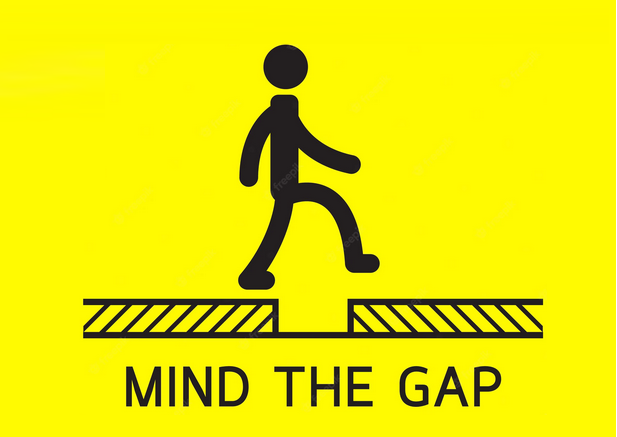Christine Benz: Hi, I'm Christine Benz for Morningstar.com. We are nearly 10 years into the current market expansion, and Morningstar's director of global ETF research, Ben Johnson, thinks it's a good time for investors to revisit their portfolios' risk exposures. He is here with me today to share some specific strategies for doing that.
Ben, thank you so much for being here.
Ben Johnson: Thanks for having me, Christine.
Benz: Ben, in the latest issue of ETFInvestor, you spent a lot of time talking about risk. You noted that you think it's a good time for investors to check up on their portfolios' risk exposures. We have seen a little bit of volatility in the market so far here in 2018. Why do you think it is an opportune time to be looking at risks that might be lurking in portfolios?
Johnson: Christine, quite simply put, it makes sense to repair your roof while the sun is still shining, before it starts raining. What we have seen is that conditions in the market, the market climate, has been generally quite sunny since we touched the very bottom of the market in March of 2009 in the midst of the global financial crisis.
I recently took a look at some data, and I graphed the trailing three-year standard deviation of returns for the S&P 500 going all the way back to March of 1939. What we see is that, at present, we are in the third longest streak ever of below average volatility in the U.S. equity market. The next longest streak ended in May of 1962. This period of relative calm is unprecedented in most investors' lifetimes. There's no better time now while the sun is still out, before clouds are beginning to form, to take a look at your roof and make sure that there's no holes that you need to be patching.
Benz: Because these periods of relatively placid market performance don't last forever, that we inevitably will see some period of volatility.
Johnson: Do not last forever. Absolutely not.
Benz: In the issue of ETFInvestor you laid out some specific things that investors should be thinking about when thinking about troubleshooting risk in their portfolios. Top of the list was asset class exposures, checking up on that. Why is that so important?
Johnson: Asset allocation is a huge driver of your long-term returns. It also is a way to optimize for good behavior, which I would argue matters more than anything else. Matters more than asset allocation, matters more than security selection. If you were to just have a simple 60/40 portfolio, 60% invested in U.S. equities, say, through the Vanguard Total Stock Market Index Fund, and 40% invested in U.S. bonds through the Vanguard Total Bond Market Index Fund, take that portfolio, invest in that portfolio in March of 2009 at the very bottom of the market, and fast-forward to today. What you would see is, if you left that unattended, if you did not rebalance, you would have 84% of your assets invested in U.S. stocks.
Now, this is an extreme scenario. What I would guess is that many investors have been enjoying what have been very favorable conditions in the stock markets, that they have been happy to be invested in stocks, and in many cases, overweight stocks. Now, I would argue, is a fantastic time to revisit your asset allocation and have a gut check and understand whether or not you have too much equity risk in your portfolio, especially given how long in the tooth the current bull market has become.
Benz: Well, that's obviously a huge topic--how to set the right asset allocation. In terms of some coaching that you can provide on how investors should approach that question, where should they look for advice about how to set their asset allocation?
Johnson: I think you need to look externally. You need to sort of look at the data. You need to consult with a professional, if you need to phone a friend, if you need that help. You need to look internally as well and understand what is your willingness, what is your ability to tolerate various levels of risk, not just today, again, while the sun is still shining, but is your asset allocation today something you will be comfortable with should markets take a turn for the worse.
Benz: Would it be the kind of thing that you could live with and hang tight with?
Johnson: Absolutely.
Benz: Another thing you wrote about is, looking at your issue selection, looking at your security selection and seeing if there are some ways that you might shade things over to less volatile securities within both equities as well as bonds. Let's start with equities. If I'm looking at my equity portfolio today and I'm thinking, well, I still want to maintain maybe an equity-heavy posture, but I want to make sure that I'm not in the most volatile stocks. How can I think about doing that?
Johnson: Well, fortunately for investors there are a wide variety of tools in the fund's tool kit and in the ETF tool kit in particular. So, an example in the equity space would be the iShares Edge MSCI Minimum Volatility USA ETF. The ticker for that fund is USMV. That fund has a Morningstar Analyst Rating of Silver. What that fund does is it looks to build a portfolio of U.S. stocks that is going to be inherently less volatile. It's not going to draw down as deeply. You are not going to participate in bear markets to the extent you would if you just owned a broad U.S. equity index fund. By way of paying for that, if you will, you are not going to participate in the upside as much as you would otherwise as well. This is an interesting fund for investors who want to maintain an equity allocation but don't necessarily want to have a scenario where they are participating fully in the downside in the event of any downdraft in the stock markets in the United States.
Benz: How about on the fixed-income side? You mentioned to me before we got rolling here that there has been just this torrent of assets into ultrashort-term bonds. Is that the way to do it or do you think maybe investors are overdoing the managing duration risk? How should investors approach that?
Johnson: I think it's a way to do it. People have been worried about rising rates as long as the bull market in equities has been going on now. The Fed looks keen to continue to raise rates at least into the back half of this year. In the short term, people are very concerned about this, and this has manifest itself on a year-to-date basis in the form of $14.5 billion of investors' money going into ETFs in the Morningstar Ultra Short Term Bond category. People are worried about interest rate risk, whether rightly or wrongly. Certainly, in the immediate term, rising rates will negatively impact the value of many bonds.
Over the long term, I would argue that these fears are somewhat overblown, especially if you are someone who is currently in retirement and spending your way through retirement. Rising rates are a long-term good thing, because earning 1.5% on your savings is far inferior than earning 2.5% or 3.5% or what have you. In the near term, I think, investors are probably in many cases overreacting to rising rate fears. In the long-term, I think, investors, especially those spending their way through retirement, should see this as a positive trend.
Benz: I might want to avoid the very longest-duration bonds, given what we suspect could happen to interest rates in the years to come. But the core intermediate-term and maybe short-term products, those still make sense as a good bulwark in my portfolio against equity risk.
Johnson: Absolutely. That's absolutely the case. The further out the curve you go, the more risk you are going to take. If you get all the way out on the curve, you are going to see a level of volatility that's going to look like stocklike volatility.
Benz: Ben, you have mentioned a couple of times the sort of behavioral risk, the chance that if my portfolio is too volatile that I will do something really rash with it, maybe switch everything to cash and then be sitting there watching the market start to creep up. Do you have any guidance on how investors can manage their own behavioral risks? It sounds like kind of addressing at the portfolio level the volatility is one way to do it. Any other tips that you can provide?
Johnson: The greatest risk we all face is the risk that we look at in the mirror every morning and the risk manifesting itself in making the wrong decisions at absolutely at the wrong time. The best advice I could possibly offer would be to manage the first two items we've discussed--that has to do with asset allocation and security and fund selection for the best behavioral outcome possible. Find a plan and asset allocation, find a set of funds or individual securities that you are most likely to stick with through thick and through thin, because ultimately, it's the time in the market that matters moreso than anything and far less so and that's far easier to control than how you might try to time various market exposures or when you might try to dial up or dial down the risk of either your asset allocation or the funds and securities that are within your portfolio.
Benz: Always great to hear your insights, Ben. Thank you so much for being here.
Johnson: Thank you for having me.
Benz: Thanks for watching. I'm Christine Benz for Morningstar.com.





















